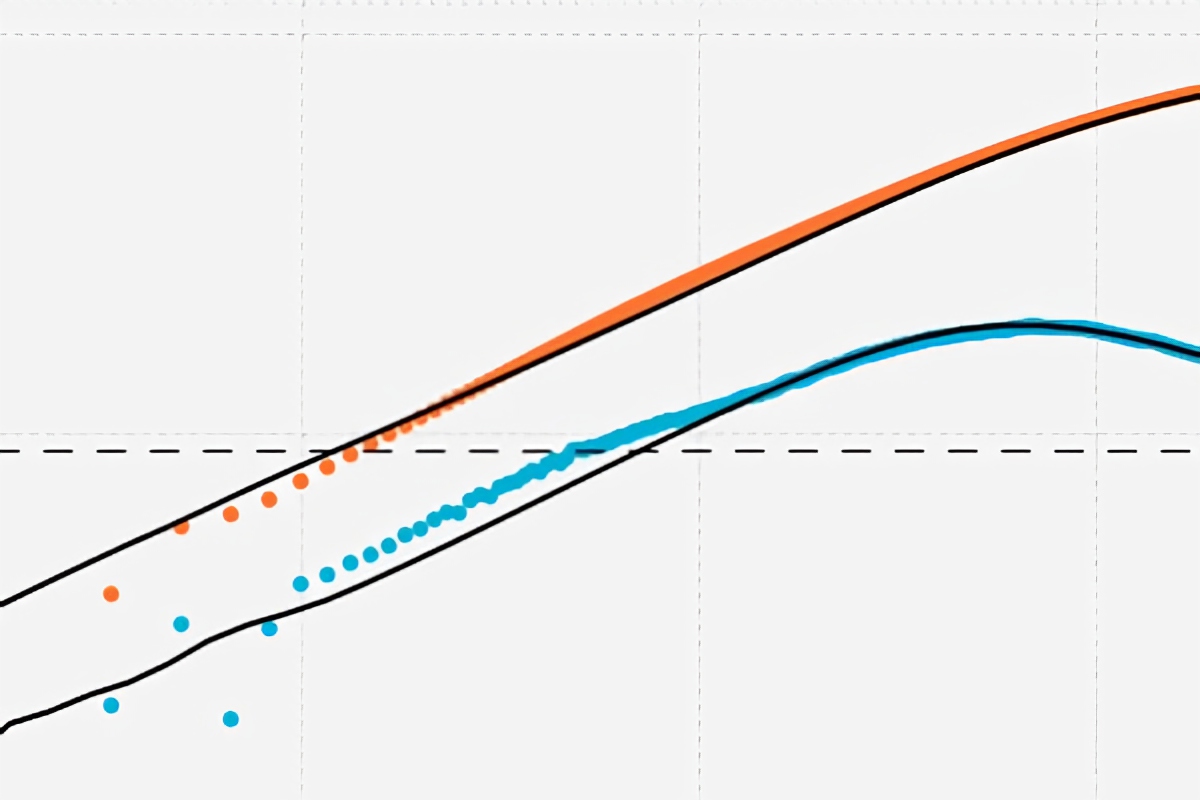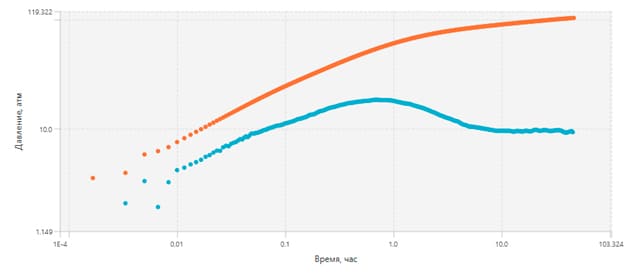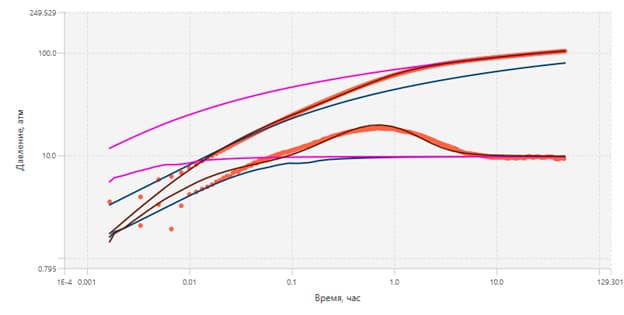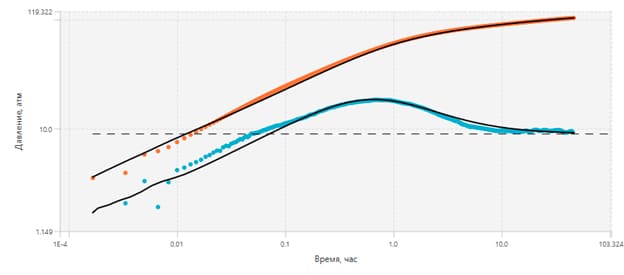21.01.2020

During the injection wells operation such a phenomenon as AHF is often encountered – the auto hydraulic-fracture of a formation caused by high pressure of fluid injection. The resulting fractures have variable geometry, where the half-length will directly depend on the pressure at the bottom of the well. Without taking this fact into account when interpreting the PTA, a number of mistakes can be made.
When testing such well on the pressure derivative, the effect of transition from one geometry to another can be observed. A typical view of data from a well with the auto hydraulic fracture is shown in the figure below:

You can see classical linear flow on short time and stabilized radial flow on long time. There is a transition effect between them which does not correspond to the mathematical model of the fracture. If you try to match a model in a standard way, then the question comes up – what the period of time is to focus on when adapting the model: initial or final.

Trying to adapt the model to long times (purple lines) with constant radial flow position will lead to the whole variance further on short times. Usually this discrepancy is balanced by interpreters using the changing WBS (black curves). In this approach the obtained value of the half-length remains equal to the number corresponding to the half-length of the fracture in the closed state. The use of such value in subsequent hydrodynamic calculations is incorrect as the fracture will increase its geometry during the well operation. It is possible to partially estimate the size of the fracture while the well is operating by the linear flow mode, adapting the model for short times (blue curves). In this case, the size of the fracture for a particular mode is estimated, but the model will not match remaining data areas.
Since this phenomenon is quite common in the injection well stock, it would be advisable to have a tool which can provide the correct characteristics of the system under study. The team of SiamWellTest made an attempt to develop such tool. The attempt to simulate the process of changing the geometry mathematically was made. As a result, a fairly good convergence of the fact was achieved:


05.05.2025
SiamDataSpectrum is a software suite designed for the centralized management, storage, visualization, and export of large volumes of time-series data.

06.05.2024
Siam Geotest has released the SiamWellTest 2.0.4 update with new functionality and with improvement of the current functionality.

22.12.2023
We are pleased to inform you that we have released an update for SiamEngy, a multi-tool application for solving the day-to-day tasks of oil and gas engineers.